
Mudras
Content of the page
Mudras in primary sources of Yoga
Mudras in primary sources of Yoga
Mudra was used as a synonym of asana during the period of establishment of hatha yoga (yoga-mudra, maha-mudra: Gheranda-samhita and other texts). Mudra is a position of the fingers that helps to manage the state of mind during the practice (A hand mudra is also a way to indicate an archetype of a deity in sculptures and pictures).
Mudra is a tantric practice of rising kundalini (or appearance of different states) that includes position of a body, mantra or meditation and pranayama (vadzhroli-mudra, sahadzholi-mudra, khechari-mudra, ashvini-mudra).
The aim of all three practices is to control your own energy and emotional state. In different texts, energies that are controlled by mudras are named: kundalini, bundi, prana, shakti.
Ability of mudras to control emotional states has been used in classical Indian theatre and dance art, where mudra is called “hasti” (from Sanskrit हस्त [hasta] — hand, wrist). Mudras include special positions of the eyes (for example: sambhavimudra, vaishnavimudra), tongue (nadhomudra, khecharimudra) and even anus (ashvinimudra). Mudras delicately affect the human body, especially the emotional sphere.
Our unconscious gestures are connected to the current emotional state and reflect the movement of the energy in subtle bodies. Mudras use this concept to create “beneficial” movements of energy and thereby develop desired emotional state.
Position of his body, connected to the birth, pleasure and suffering (meaning of physical body) is mudra,
His natural breathing is wonderful Yoga.
After experiencing this elevated, powerful and bright [state], that does not have light?”
atha haṭhayogaḥ - mahāmudrādidaśakaṃ karmāṇy aṣṭau ca kumbhakāḥ |
caturaśītyāsanāni prāhuś caitadd haṭhāhvayam ||1.18||
"Hatha yoga is (18)
“Ten mudras [in other words seals], beginning with mahamudra, eight techniques of purification,
[eight] breathing exercises [kumbhak], eighty four asanas are counted in the context of hatha”.
10. So, mahamudra
By pressing the crotch with your left foot, straighten your right foot and hold it tight with two hands.
11. The energy should be held from above, by keeping the throat lock, then the energy straightens like a snake that was struck with a stick.
12. Thanks to this effort, kundalini energy straightens. Then it stops the death and supports ida and pingala.
13. Then exhale gradually and slowly.
14. Muhamudra is known for the greatness of its effects. It destroys such problems as death, sickness and ageing. That is why sages consider it the best [exercise].
15. Let it direct [prana] through the moon channel (ida) and through the sun channel (pingala). That is how mudra is formed.
3.6. Press the left heel to the back passage. Stretch out the right leg and right foot. Hold the toes of this leg with your hands.
3.7. Lock the throat and look between your eyebrows. This mudra is called Maha-mudra by sage.
3.8. When practising Maha-mudra, coughs could be cured during tuberculosis, twisted bowels, enlarged spleen, indigestion, fever and other illnesses.
Mudras that are mentioned in Joga-dipika texts, judging by the description, consist of asanas, pranayamas and energy practices (khechari-mudra).
Anjali-mudra
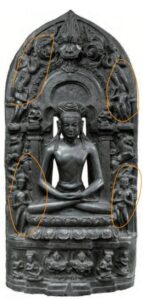
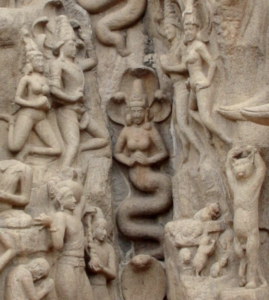
Greeting gesture with palms folded together isn’t named Namaste. We see this gesture together with the phrase “Greetings to you”, since the sense of the mudra is to express greetings and affection. The name of this mudra is anjali.
Etymology of the word añjali अञ्जलि is the root añj meaning decorate, lubricate, express and suffix alí.
In yoga, it is the position of fingers and other parts of the body that influences the emotional state, so mudra sometimes is a synonym of asana (yoga-mudra, maha-mudra).
Anjali mudra has two types:
1. Gesture of appreciation, when the palms are held together and fingers directed upwards.
2. The cup formed with palms to get water or accept a donation.
Historical monuments — sculptures of 11-12th century from Bengali of teacher-ascetic Shaiva (guru Vid’yashiva is the name on the sculpture). The teacher is surrounded by the students that respectfully hold hands in anjali mudra, in this way expressing their loyalty and respect. One more sculpture is a famous bas-relief of VII century from Mallupurama. There are nagus with their palms folded greeting Ganges.
In the famous Sanskrit dictionary of British Sanskrit scholar Sir Monier Monier-Williams, we could find a legend about scientist Patanjali that fell into folded palms of his teacher Panini (because पत् pat is someone falling, someone flying and та अञ्जलि añjali — is folded palms).
We do Anjali mudra in the state of greeting at the beginning and at the end of Suriya-Namaskar.
We use all kinds of mudras to complete the effect of asanas, hence for development of a certain state of being.
Hand mudras in yoga and buddhism vajrayana
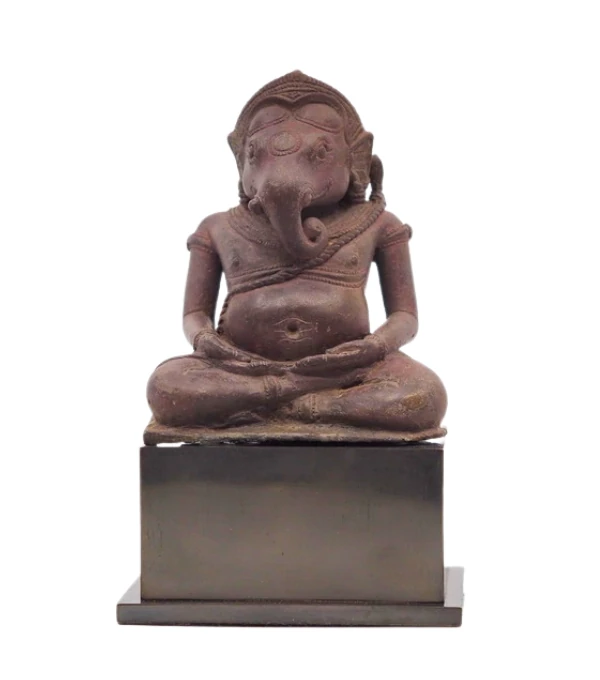

Dhyana-mudra or dhyani-mudra (from Sanskrit dhyāna is meditation, concentration). It is the mudra for someone who is meditating.
There is Buddha Brahmajyotis, Vajrayana iconography in the picture.
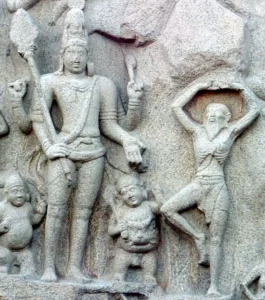
Varada mudra (in Sanskrit Varada — giving a good deed) and is a symbolic gesture of giving blessings.
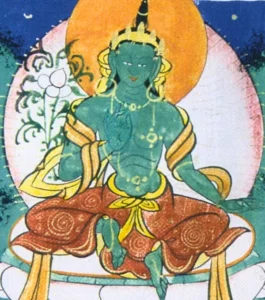
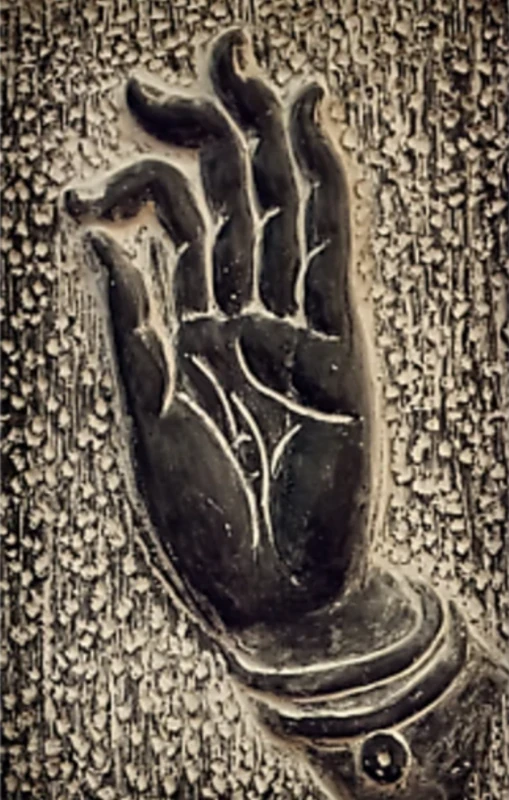
Vitarka mudra (in Sanskrit vitarka is thinking, analysing and considering) and is a symbolic gesture for someone who is involved in debates, a gesture to use during a dispute and during teaching. In this mudra, the tips of the thumb and index fingers are held together, and other fingers are pointing upwards.
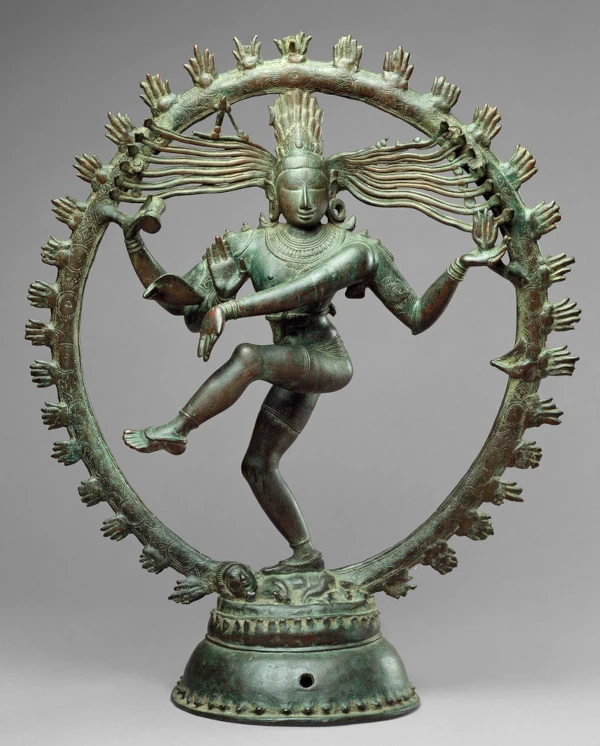
Abhaya mudra
Abhaya is fearlessness and it is a gesture for protection and elimination of the fears.
Hold the palm of the hand on the level of the chest turning outward, the hand slightly turned away with the edge of the palm facing outward, fingers pointing upwards, the thumb separated from the other four fingers.
In the picture, the left lower hand is in abhaya-mudra, as Lord of Dance (Nataraja), 11th century. Tamil Nadu. The Metropolitan Museum of Art, New York.
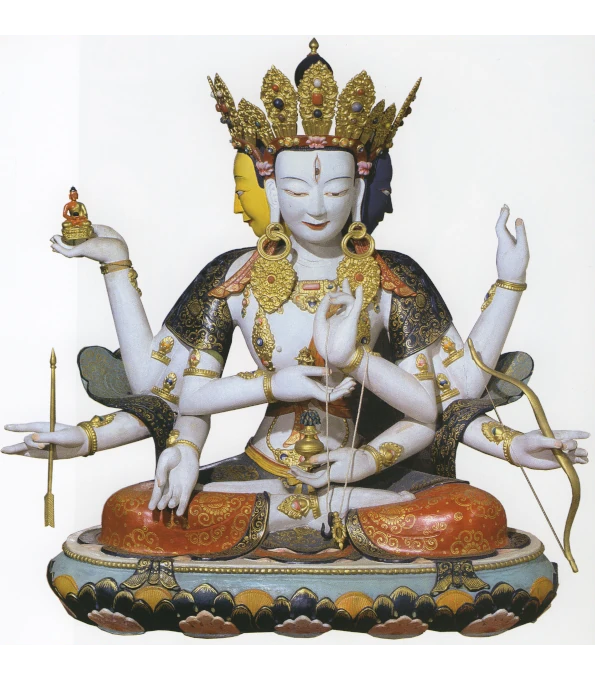
Dharmacakra-mudra (in Sanskrit, dharmacakra and the literal meaning is the Wheel of Law). And a symbolic gesture of turning the Wheel of Dharma, the teaching mudra of the Buddha.
In the depiction of Ushnisha-Vijaya – Yidam of Kriya Tantra. 20th century.
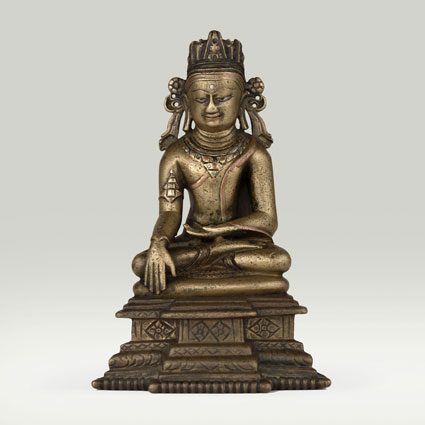
Bhumisparsa-mudra
Bhūmisparśa-mudrā, touching the earth, is the symbolic gesture for someone who is calling the earth to witness.
This gesture is also called the gesture of summoning the Earth as a witness. The “touching the earth” gesture serves as a reminder of Buddha Shakyamuni’s victory over the temptations of Mara. In this gesture, the palm of the right hand hangs near the right knee, with the fingers touching the lotus throne, and the palm resting on the knee. Buddha sits in a lotus position on a lotus throne, his left hand rests on his knee, with the palm facing upward.
Buddha Shakyamuni, 12th century, Burma, Tibet Museum
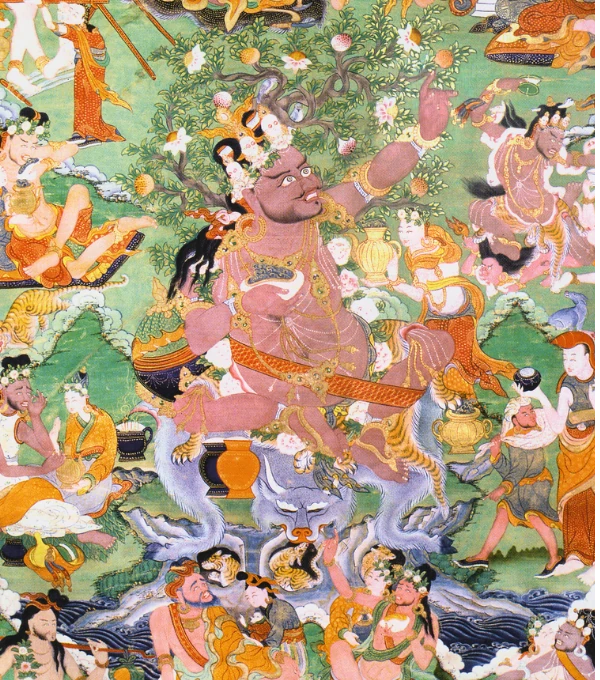
Tarjani Mudra is a gesture of threat.
On the tanka — Virupa
